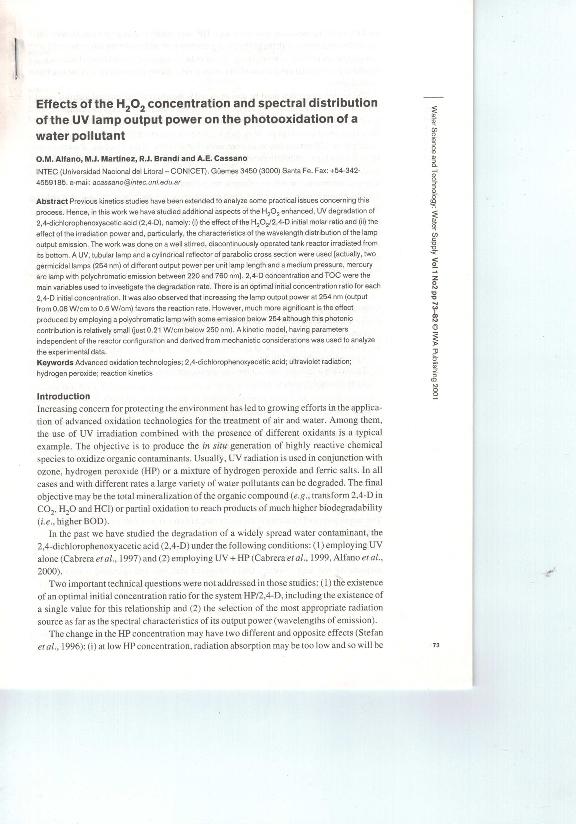Artículo
Effects of the H2O2 Concentration and Spectral Distribution of the UV Lamp Output Power on the Photooxidation for a Water Pollutant
Fecha de publicación:
04/2001
Editorial:
IWA Publishing
Revista:
Water Science and Technology: Water Supply
ISSN:
1606-9749
Idioma:
Español
Tipo de recurso:
Artículo publicado
Resumen
Previous kinetics studies have been extended to analyze some practical issues concerning this process. Hence, in this work we have studied additional aspects of the H2O2 enhanced, UV degradation of 2,4-dichlorophenoxyacetic acid (2,4-D), namely: (i) the effect of the H2O2/2,4-D initial molar ratio and (ii) the effect of the irradiation power and, particularly, the characteristics of the wavelength distribution of the lamp output emission. The work was done on a well stirred, discontinuously operated tank reactor irradiated from its bottom. A UV, tubular lamp and a cylindrical reflector of parabolic cross section were used [actually, two germicidal lamps (254 nm) of different output power per unit lamp length and a medium pressure, mercury arc lamp with polychromatic emission between 220 and 760 nm]. 2,4-D concentration and TOC were the main variables used to investigate the degradation rate. There is an optimal initial concentration ratio for each 2,4-D initial concentration. It was also observed that increasing the lamp output power at 254 nm (output from 0.08 W/cm to 0.6 W/cm) favors the reaction rate. However, much more significant is the effect produced by employing a polychromatic lamp with some emission below 254 although this photonic contribution is relatively small (just 0.21 W/cm below 250 nm). A kinetic model, having parameters independent of the reactor configuration and derived from mechanistic considerations was used to analyze the experimental data.
Archivos asociados
Licencia
Identificadores
Colecciones
Articulos(INTEC)
Articulos de INST.DE DES.TECNOL.PARA LA IND.QUIMICA (I)
Articulos de INST.DE DES.TECNOL.PARA LA IND.QUIMICA (I)
Citación
Alfano, Orlando Mario; Martinez, Maria Julia; Brandi, Rodolfo Juan; Cassano, Alberto Enrique; Effects of the H2O2 Concentration and Spectral Distribution of the UV Lamp Output Power on the Photooxidation for a Water Pollutant; IWA Publishing; Water Science and Technology: Water Supply; 4-2001
Compartir




